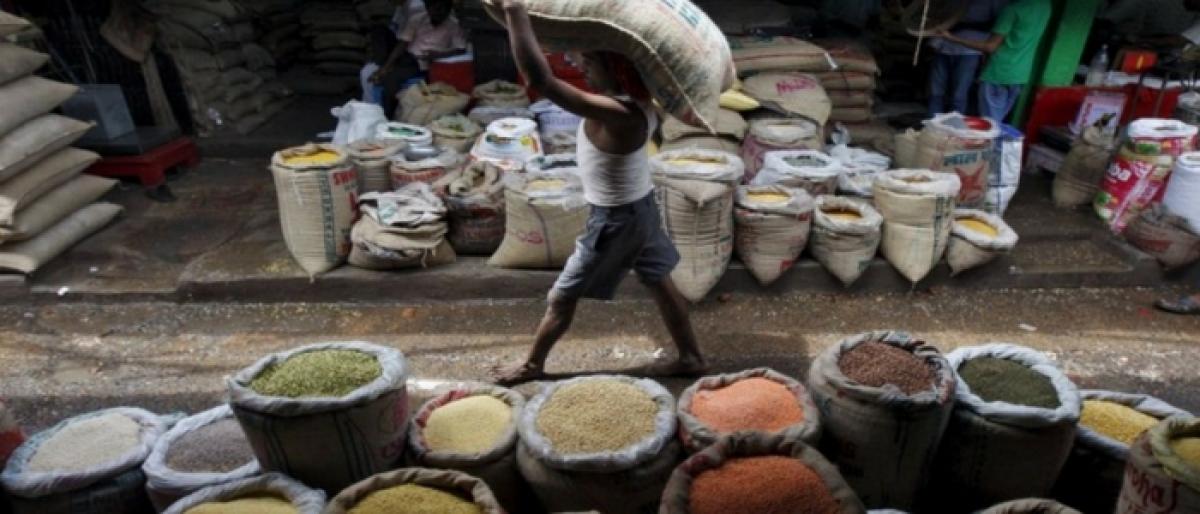Live
- Tragic Road Accident in Anantapur District Claims Four Lives
- I bow down to voters' decision: Kumaraswamy’s son on bypolls defeat
- Priyanka's resemblance with Indira Gandhi only in appearance: Robert Vadra
- NDA predicts victory in 2025 Assembly elections after winning Bihar bypolls
- Rahul Gandhi failed once again: Pralhad Joshi on poll results
- Jarange-Patil's pro-Maratha reservation cry fails to hamper MahaYuti’s performance
- After MVA's demolition, the 15th Maharashtra Assembly may not have LoP
- Pentagon official says burden sharing with South Korea is not just about defence spending
- Pakistan braces for more sectarian bloodshed after killing of 43 Shias
- BJP in Tripura doubles its membership: Party leader
Just In

Though the Goods and Services Tax (GST) is described as Good and Simple Tax, the consumer is unlikely to get any relief from the new consumption-driven tax dispensation. It may not actually fuel official inflation rate due to the way it is calculated. But, the consumer should feel the pinch as GST rolls out. Food and fuel constitute significant part of the inflation basket. As the GST exempts bo
Though the Goods and Services Tax (GST) is described as Good and Simple Tax, the consumer is unlikely to get any relief from the new consumption-driven tax dispensation. It may not actually fuel official inflation rate due to the way it is calculated. But, the consumer should feel the pinch as GST rolls out. Food and fuel constitute significant part of the inflation basket. As the GST exempts both food and fuel, the likely impact of the new tax regime on the rate of inflation is perhaps ruled out.
But, the GST has increased the rate of tax on services by three percentage points. This shall squeeze the middle-class budget. The national accounts data shows that a sizable proportion of the private final consumption expenditure in the domestic market is of services. But, services that account for almost half of the total consumption basket in the economy has a small share in the Consumer Price Index (CPI).
This makes any official assessment on inflationary impact of GST an optical illusion. As the economy grows and modernises and the incomes rise, the share of the services in the total consumption expenditure increases at the household level. Thus, the GST impact on price rise will continue to mount.
Besides, the many commodities and services that form a significant part of the average middle-class expenditure are going to be costlier due to higher levels of taxation in the GST regime. For instance, insurance premiums are set to rise on car, health etc.
Transaction fee on various financial services are expected to go up. Stay in hotels and a visit to restaurant are to become costlier. Your mobile and internet bills are expected to rise. Your health bill may also marginally go up. For instance, the prices of diabetic drugs may marginally increase.
Similarly, chewing gums, white chocolate, chocolates containing cocoa, wafers coated with chocolate, instant coffee, custard powder, students' colours, paints, varnishes, perfumes, beauty products, sunscreen, shampoos, hair dyes, after-shave lotions and deodorants will become costlier. Visits to theme parks and sporting events like IPL will be costlier.
However, the middle class may get some relief in other areas. Cab fares could get marginally cheaper. The prices of SUVs are expected to come down. Economy class air travel will become cheaper. Your electricity bill may come down as the tax on coal is reduced.
A comparative study of GST tax rates and the patterns of middle class expenditure reveal that the net impact of GST will be higher expenditure costs. Meanwhile, the market behaviour is such that the higher tax burden is automatically transferred to the consumer while the lower tax benefits may hardly percolate. Gold constitutes the major part of middle class savings in India. Gold is set to become costlier under GST.
The cyclic relationship among demand, production and investment is critical for triggering economic growth. Higher cost of consumption may dampen demand which can show a decelerating impact on the demand generation in the economy.

© 2024 Hyderabad Media House Limited/The Hans India. All rights reserved. Powered by hocalwire.com







